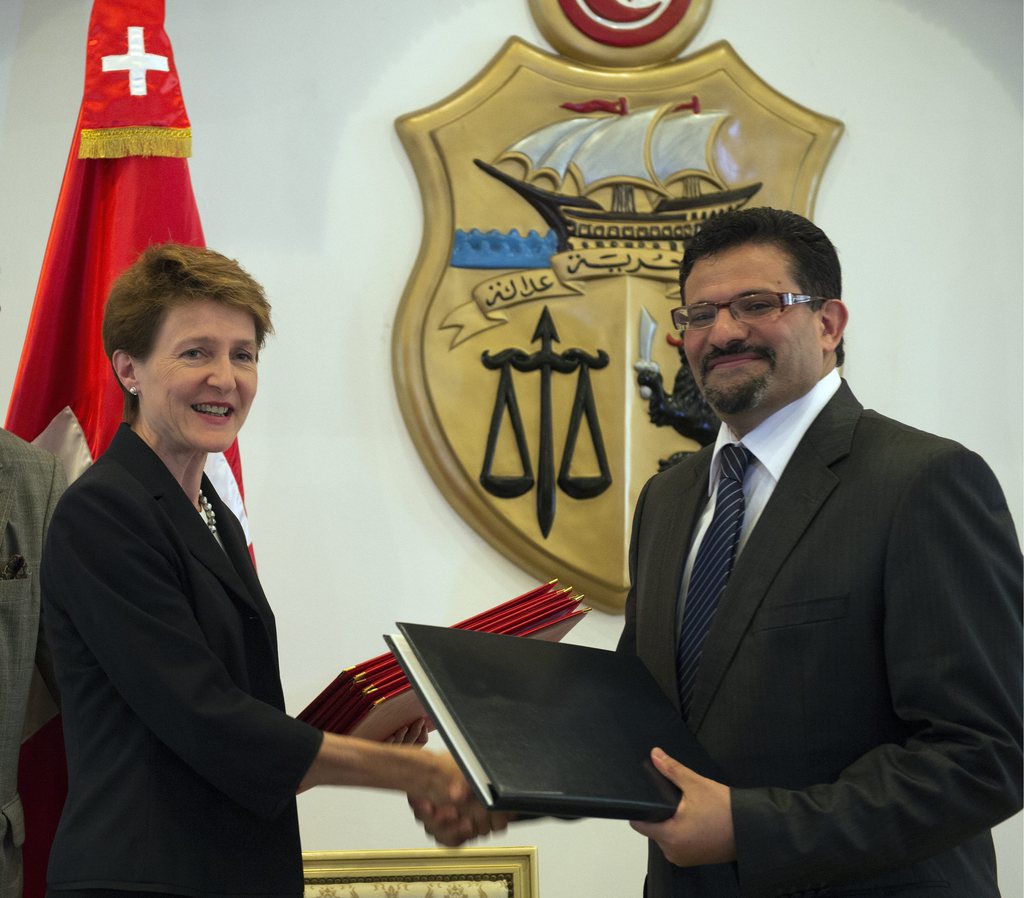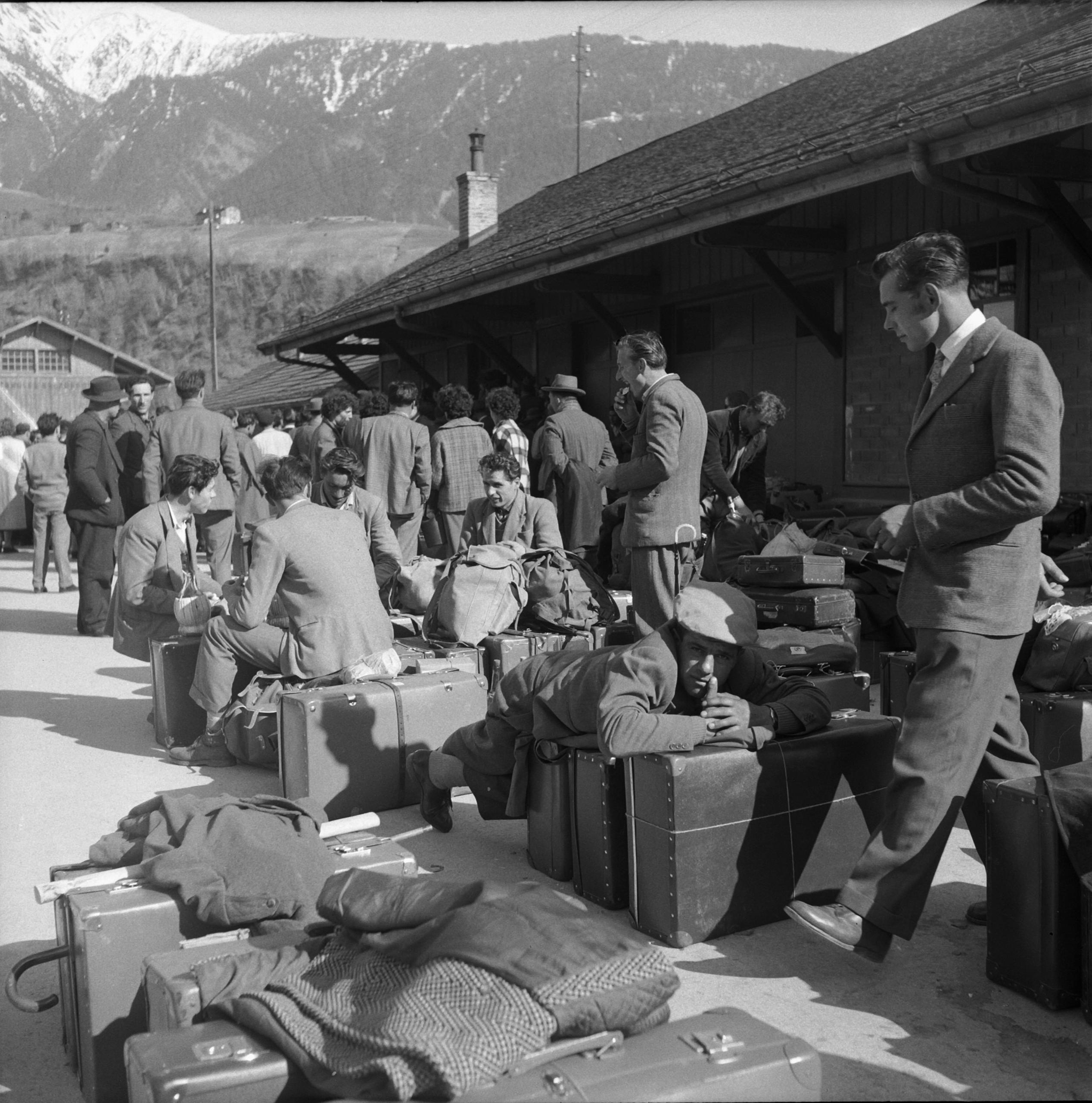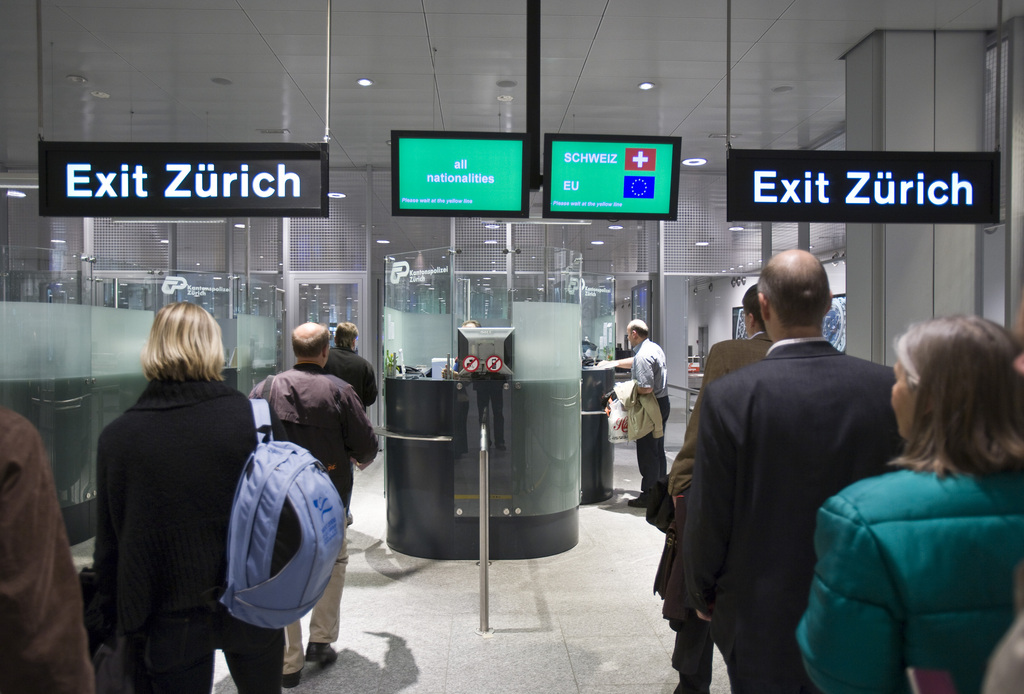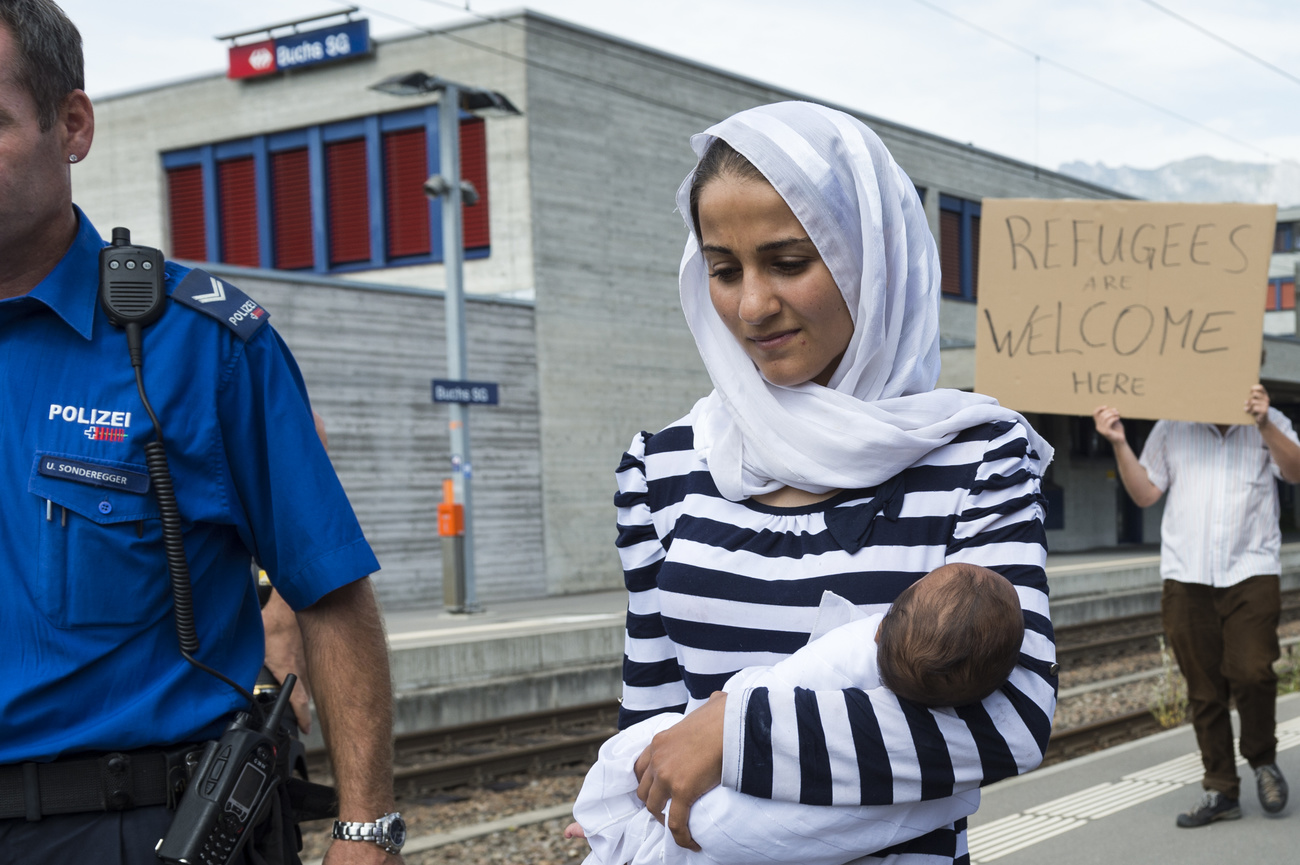Migration: Is Switzerland importing labour without the people?

Circular migration programmes are a way to fill labour shortages and promote short-term immigration. Etienne Piguet, a migration expert, discusses the risks, challenges and opportunities of such schemes for Switzerland.
On January 19, Switzerland and Tunisia agreed to enhance their ongoing migration partnership initiated in 2012 and signed a project called “Perspectives”. The project officially aims to “stimulate qualified circular migration between Tunisia and Switzerland.” Circular migration is aimed at attracting short-term immigration mainly in the form of labour. In this case Switzerland and Tunisia aim to promote internships in both countries.
It builds on the 2014 Agreement for the Exchange of Young Professionals, which has since 2015 enabled approximately 174 Tunisian youth to undertake advanced trainingExternal link through an internship or first employment in Switzerland; only one Swiss person has benefited from the exchange so far. Switzerland has signed another 13 similar trainee-exchange agreements with third countries.
SWI swissinfo.ch talked to Etienne Piguet, a professor of geography of mobilities, to better understand the definition, challenges, and impacts of circular migration policies.

SWI swissinfo.ch: What is circular migration? And what key characteristics distinguish it from other forms of migration?
Etienne Piguet: Circular migration refers to the movement of people between the countries of origin and destination, not to settle permanently but for periods ranging from a few weeks to under a year. That is typically under L permits in Switzerland, not B or C permits, which allow for more permanent settlement.
It often involves seasonal workers or those who move for short-term employment, distinct from tourists due to the longer duration of stay, typically more than three months but less than one year. Students represent an intermediary category because they only stay for the duration of their study but often for several years, however.
The critical characteristic of circular migration is the idea of return, distinguishing it from other forms of migration. A narrower definition considers that circular migration implies that migrants not only stay for a short period but come back several times, for example, a seasonal worker.
SWI: Would you say that circular migration is a relatively new phenomenon in Switzerland and the European Union’s policy landscape, or does it have deeper historical roots?
E.P.: Yes, the concept of circular migration, while relatively new in terminology, has deep historical roots. It includes migration patterns observed in the past, such as the seasonal migration of workers in Switzerland in the 1960s and even earlier migrations dating back to the 18th and 19th centuries, including temporary emigration from Switzerland to other European countries. This was for example the case for young Swiss from peasant families – mainly women – who used to spend some time doing domestic work in richer households across the French border.
The circular migration concept entered the EU through international policy efforts to maximize the positive effects of migration on development. At the EU level, it was seen as a tool for managing migration policies, through legal instruments as well as formal bilateral and multilateral programmes and projects.
Circular migration became one of the tools of the Directorate General for Migration and Home Affairs, which is part of the European Commission, to mitigate immigration. It was part of their security-focused approach to migration, with an emphasis on return and readmission rather than on facilitating legal migration.
Since 2001, the EU has made efforts to promote this type of migration. However, almost 20 years later, it is still challenging to identify a clear and cohesive policy that outlines the EU’s approach to circular migration.
Source: Vankova, Z. (2020). The Formulation of the EU’s Approach to Circular Migration.External link In: Circular Migration and the Rights of Migrant Workers in Central and Eastern Europe. IMISCOE Research Series. Springer, Cham.
SWI: Scholars argue that circular migration programmes reflect the desire of countries of destination to import labour without the people. Do you agree with this assessment?
E.P.: To a large extent, yes, especially regarding the guest worker schemes of the past. However, it is essential to differentiate between individual cases, such as when people come to Switzerland under short-term work permits from the European Union, which may not reflect a discrepancy between Swiss policy and personal wishes. These migrants have, to a certain extent, the choice [of free movement] considering the free circulation agreement between Switzerland and the European Union.

But it is true that when a circular migration programme is implemented, then I will agree that it’s probably a compromise between the immigration state and the emigration country to accept migrants with short-term permits without dealing with the effects of long-term migration. The case of internships is different because there is an attempt of a win-win-win situation: the goal is that some competencies can be brought back to the country of origin.
SWI: Reflecting on your book Immigration in Switzerland: 60 Years of Half-opening, would you describe circular migration as a “half-opening policy”?
E.P.: Definitely. Switzerland has historically stated it does not want long-term immigration but will accept temporary migration, making circular migration indeed a form of controlled openness or “half-opening.”
SWI: Circular migration programmes, such as Perspectives, have been branded a triple-win. In this case, that would be a win for Switzerland, Tunisia, and migrants. How valid is this claim?
E.P.: This concept is indeed the core of the debate around circular migration. The idea of achieving a triple-win scenario is an exciting but challenging target. It is difficult, namely when one of the actors, the migrant, has no complete free choice [of movement]. However, I’m quite convinced that it is well worth trying to set up such programmes. At least it is better than simply closing the borders.
Some scholars point out that people who cannot have a longer-term permit do not have freedom of movement. But to a certain extent, the destination countries that implement such policies are also constrained by other forces, such as those hostile to permanent immigration.
The term ‘circular migration’ has only been used for international migration since the early 2000s. Supporters of this idea say that it benefits destination countries, origin countries, and the migrants themselves: a triple win’
Source: Circular Migration: Triple Win, or a New Label for Temporary Migration?External link 2014.
SWI: It’s essential to clearly define rights and duties for all stakeholders to ensure the success of circular migration programmes. What measures should be implemented to protect migrants and positively impact both countries of origin and those of destination?
E.P.: Recent academic research suggests that all have to gain by more negotiations involving the country of origin, the immigration country, and trade unions to represent migrants, aiming for fair conditions for all parties. However, implementing such balanced negotiations remains challenging.
Historical episodes, particularly those involving Italian seasonal workers in Switzerland, demonstrate that improved worker conditions were reached not through individual negotiations with employers but through effective advocacy by the Italian state. This underscores the importance of having dedicated representation for circular migrants.
It’s conceivable that the Tunisian government could actively oversee the well-being of its migrants to prevent abuse or mistreatment. This could mean Tunisian trade unions, similar entities, such as NGOS, and possibly international organisations to ensure a comprehensive approach to safeguarding migrants’ rights and well-being.
SWI: Can we talk about an even balance of power in agreements between countries like Switzerland and Tunisia?
E.P.: The balance of power in negotiations is complex and is not solely based on economic disparity.
For agreements to be genuinely reciprocal, they must align with the involved countries’ mutual interests while also adapting to the changing dynamics of labour market needs and migration policies.
The landscape has significantly shifted since the 1960s. Back then, the mutual benefits were more straightforward. Italy benefited from sending workers abroad, and Switzerland needed those workers for its economic growth. Today, agreements like those with Tunisia navigate a more intricate web of interests. These encompass labour market demands and Switzerland’s expectation that Tunisia might more rapidly accept the return of individuals with denied asylum requests, introducing a layer of complexity to these negotiations.
Long-term migrant: “a person who moves to a country other than that of his or her usual residence for a period of at least a year (12 months), so that the country of destination effectively becomes his or her new country of usual residence. From the perspective of the country of departure the person will be a long-term emigrant and from that of the country of arrival the person will be a long-term immigrant.”
Short-term migrant: “a person who moves to a country other than that of his or her usual residence for a period of at least 3 months, but less than a year (12 months) except in cases where the movement to that country is for purposes of recreation, holiday, visits to friends or relatives, business, medical treatment or religious pilgrimage.”
Return migrants: “persons returning to their country of citizenship after having been international migrants (whether short-term or long-term) in another country and who are intending to stay in their own country for at least one year”.
Source: United Nations Economic Commission for Europe, 2016
Edited by Virginie Mangin/gw

In compliance with the JTI standards
More: SWI swissinfo.ch certified by the Journalism Trust Initiative














You can find an overview of ongoing debates with our journalists here . Please join us!
If you want to start a conversation about a topic raised in this article or want to report factual errors, email us at english@swissinfo.ch.